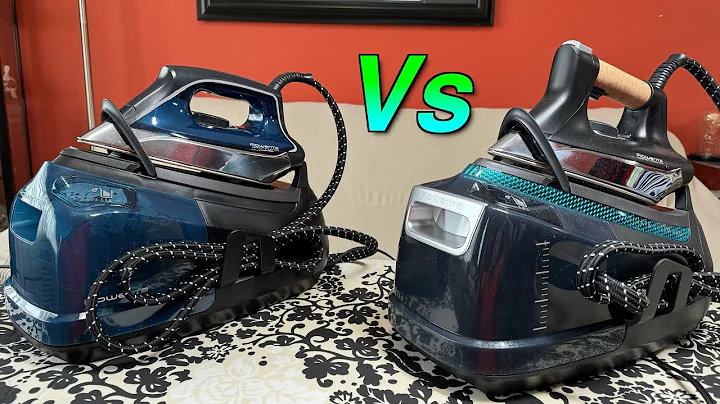Winter Protection for Fig Trees: Essential Tips to Ensure Survival
Table of Contents:
- Introduction
- Winter Protection for Container Figs
- Moving the Figs Away from Low Temperatures
- Choosing the Right Storage Environment
- Timing for Putting the Figs Away
- Winter Protection for Inground Figs
- Understanding the Hardiness of Fig Trees
- Wrapping and Insulating the Figs
- Bending and Covering the Branches
- Using Leaves as Insulation
- Conclusion
- FAQs
Winter Protection for Fig Trees 🌲🌨️
Winter can be a challenging time for fig tree enthusiasts. With the dropping temperatures, it becomes crucial to provide proper winter protection to ensure the survival and success of your fig trees. In this article, we will discuss effective strategies for winter protection for both container figs and inground figs.
Winter Protection for Container Figs 🌬️
Container figs require special attention during winter to prevent damage to their delicate roots. Here are some key steps to protect container figs from the harsh winter conditions:
Moving the Figs Away from Low Temperatures ❄️
Container figs must be relocated to a sheltered area once the temperature drops below 15°F (-9°C). It is particularly important to move them away from temperatures below 10°F (-12°C) to prevent root damage, which can ultimately lead to the death of the fig tree. By moving them to a more suitable environment, you can ensure their survival and have a healthy harvest in the upcoming season.
Choosing the Right Storage Environment 🌡️
Selecting the right storage environment for your container figs is crucial to prevent premature awakening. The chosen environment should be above 15°F (-9°C) to maintain dormancy and below 50°F (10°C) to avoid premature awakening. If the fig tree wakes up too soon, the risk of damage due to subsequent frost increases. Careful consideration must be given to storage conditions to ensure the fig tree remains in dormancy until the appropriate time for growth.
Timing for Putting the Figs Away ⏰
One common mistake many fig enthusiasts make is putting their container figs away too soon. It is recommended to wait until around Thanksgiving or even Christmas (depending on your region's climate) before moving the figs away for winter storage. Premature dormancy can lead to early awakening, resulting in potential frost damage. It is crucial to allow the fig tree ample time to naturally enter its dormant state before storing it away for the winter.
Winter Protection for Inground Figs ⛄
Inground fig trees have a higher level of hardiness compared to container figs, but they still require proper protection during winter. Here are some essential steps to safeguard your inground figs from the cold:
Understanding the Hardiness of Fig Trees ❄️🌿
The hardiness of fig trees varies depending on the variety and local climate conditions. Most fig trees can withstand temperatures as low as 15°F (-9°C), but some exceptionally hardy varieties can tolerate even lower temperatures, down to 0°F (-18°C). When determining the extent of protection needed, it is crucial to know the specific hardiness level of your fig tree.
Wrapping and Insulating the Figs 🧣
To provide extra protection against the cold, wrapping your fig tree and insulating it can make a significant difference. Start by tying the branches close together and wrapping them with insulated materials. Cover the wrapped tree with a tarp or additional insulating material. This helps create a barrier against the cold and prevents frost damage. It is important to ensure there are no air leaks in the wrapping and that the ground around the fig tree is well-insulated.
Bending and Covering the Branches 🌳
Another effective technique for protecting inground figs is bending and covering the branches. By bending the branches all the way to the ground and securing them with stakes or garden staples, you can create a more compact arrangement that is easier to protect. Cover the bent branches with insulated materials, such as blankets or specialized insulation products. This method provides an added layer of defense against freezing temperatures and frost.
Using Leaves as Insulation 🍂
Leaves can serve as a natural and effective insulator for young fig trees. Construct a protective pen around the fig tree using chicken wire and stakes. Fill this enclosed space with leaves, ensuring every part of the tree is covered. The higher the leaves accumulate, the better the insulation. This simple technique helps shield the fig tree from cold winds and provides the extra warmth needed for survival.
Conclusion 🌟
Proper winter protection is essential for the successful survival of fig trees. Whether you have container figs or inground figs, understanding the specific needs of your trees and implementing the appropriate protection techniques will ensure their well-being during the cold winter months. By following the guidelines provided in this article, you can maximize your chances of having a bountiful harvest and thriving fig trees.
FAQs ❓
Q: When should I move my container figs to a winter storage environment?
A: It is recommended to move container figs to a winter storage environment once the temperature drops below 15°F (-9°C). Waiting until around Thanksgiving or Christmas is generally a suitable time, depending on your climate zone.
Q: Can fig trees survive very low temperatures?
A: Most fig trees can withstand temperatures as low as 15°F (-9°C), but some hardy varieties can tolerate even lower temperatures, down to 0°F (-18°C).
Q: How can I protect my inground fig tree during winter?
A: Wrapping and insulating the branches, bending them to the ground, and covering them, as well as using leaves as insulation, are effective methods to protect inground fig trees during winter.
Q: What should I do if my fig tree awakens too early during winter?
A: If your fig tree wakes up prematurely, take immediate action to protect it from potential frost damage. Cover the tree with insulating material and provide additional heat sources, such as heating cables or protective cloths.
Resources:







